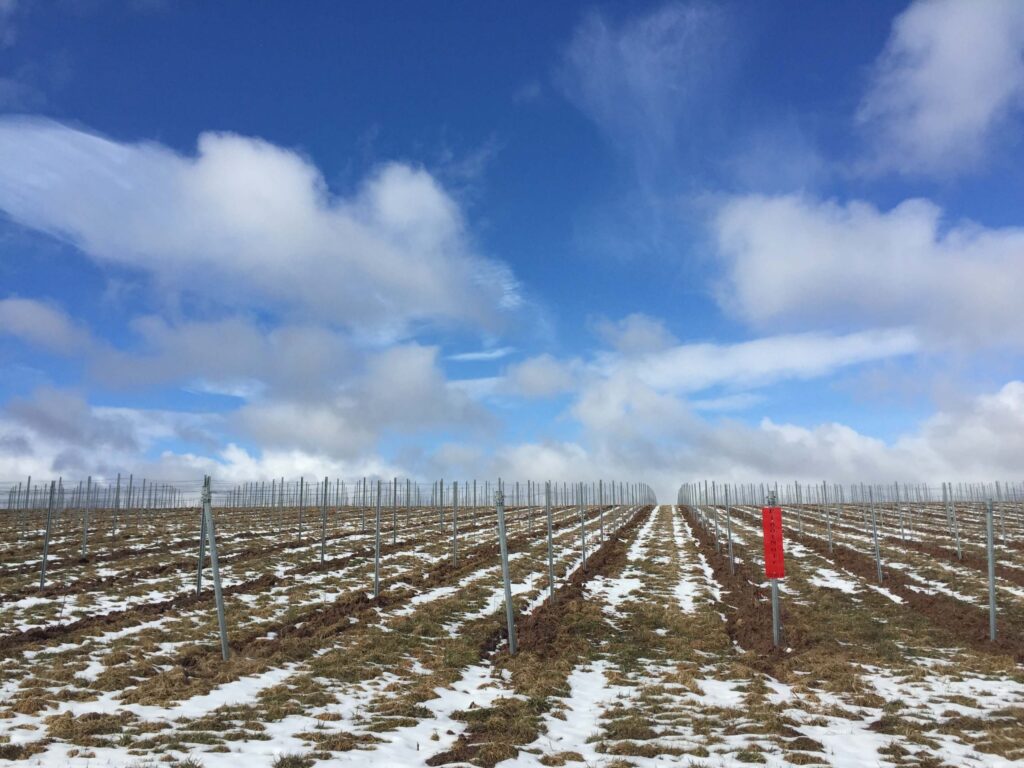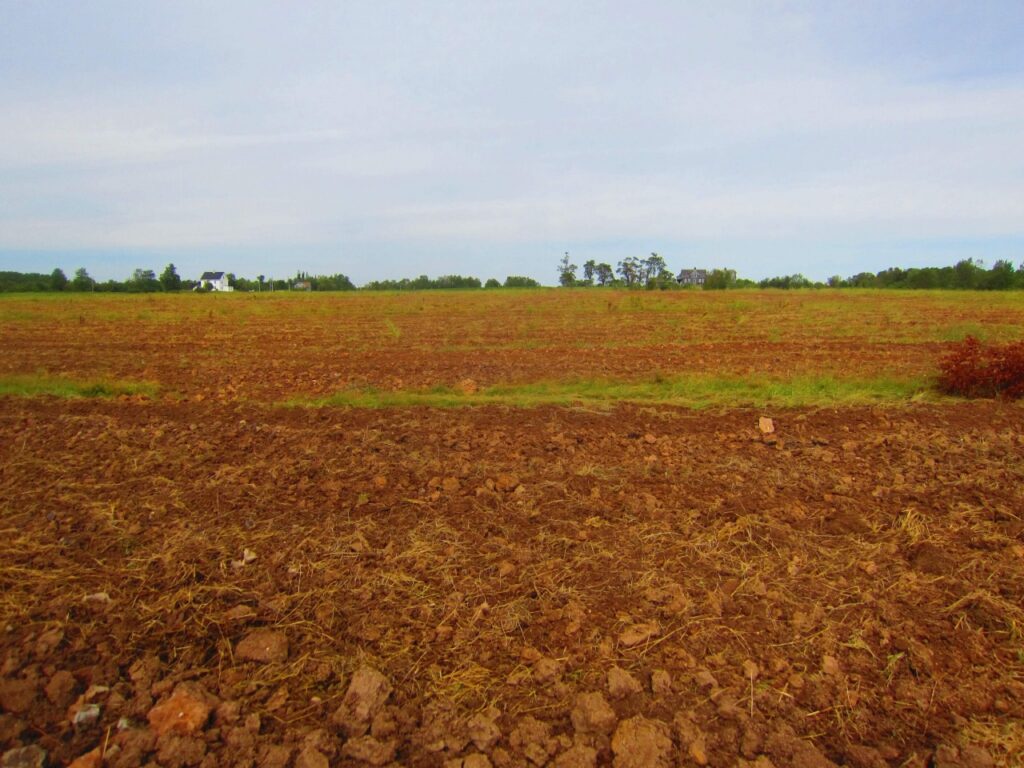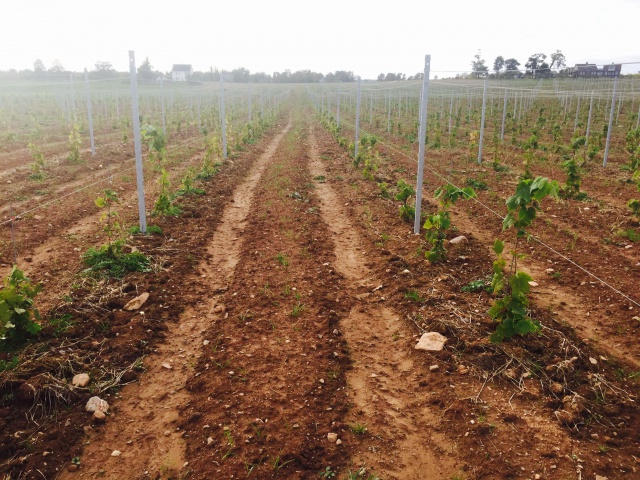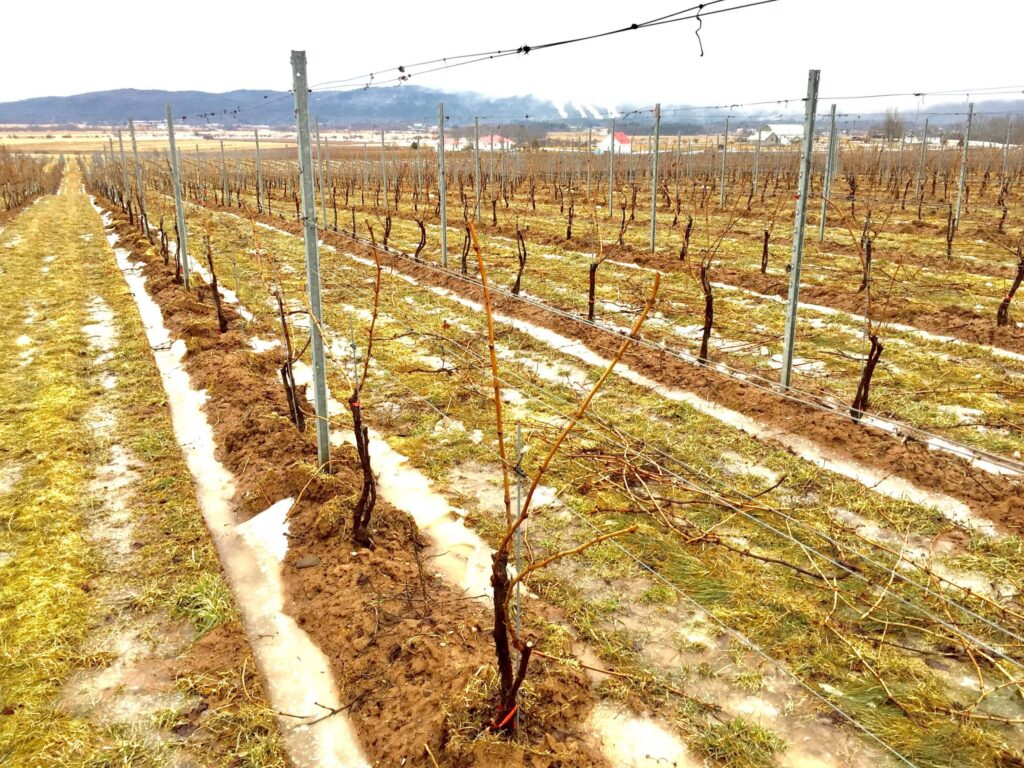At Mumana Vineyards, we’re always looking ahead. While hybrid varieties have served us well, we’re considering planting Chardonnay and Riesling, two globally renowned vinifera grape varieties. However, growing vinifera comes with significant challenges, especially in our unpredictable climate. In this post, we’ll explore the environmental risks we face—such as the threat of another polar vortex—and the important role of rootstock in establishing vinifera vines in our unique clay soil with high potassium.
Why Vinifera? The Prestige and Demand

Vinifera varieties like Chardonnay and Riesling have worldwide demand because of their reliability and exceptional wine quality. The distinct flavor profiles, prestige, and marketability of vinifera allow us to meet the expectations of wine lovers and collectors. Although our hybrid varieties are cold-hardy and adaptable, vinifera wines bring refinement and deliciousness that elevate the profile of any vineyard.
Our decision to plant vinifera represents a long-term investment. These varieties require special care, but they offer the prestige and market potential that can take Mumana to the next level.
Understanding the Environmental Risks

The polar vortex that struck Nova Scotia in February 2023 devastated our Chardonnay and Riesling vines, wiping out most of our Chardonnay and severely damaging our Riesling. Planting new vinifera means we must consider the risk of another extreme cold event in the first few critical years. Here’s how we assess that risk.
Gauging the Risk of a Polar Vortex
The first winter is the hardest on young vines. If we’re hit by another polar vortex in 2025/26, our new vines planted in Spring 2025 could suffer significant damage. To prepare, we rely on several trusted weather forecasting and environmental monitoring resources:
- Environment Canada offers historical weather data, helping us analyze temperature trends and predict future risks. You can check out their historical data.
- NOAA (polar vortex tracking) provides valuable insights into the movement and strength of polar vortex systems, giving us time to prepare.
- Farmers’ Almanac forecasts long-term weather trends. Although not always precise, it offers helpful seasonal predictions for winters in our region. Find their long-range weather forecast here.
Understanding these risks helps us plan and implement strategies to protect young vines during the most vulnerable periods.
Choosing the Right Rootstock for Vinifera
For Chardonnay, rootstock is crucial. This variety is highly susceptible to cold damage, and grafting it onto rootstock enhances its resilience in cold winters and its ability to handle clay soils with high potassium. However, Riesling tends to be more cold-tolerant and can sometimes be planted without rootstock, making it more adaptable to Nova Scotia’s conditions.

Chardonnay and Rootstock
Chardonnay’s sensitivity to cold makes it critical to select rootstock that can help the vine thrive in Nova Scotia’s climate. Rootstock offers improved cold resistance, nutrient management, and disease protection. Here are the main considerations when choosing rootstock for Chardonnay:
- Cold Hardiness: In Nova Scotia, cold winters are common, so we need rootstock that can handle frost and extreme cold. 3309 Couderc is known for its cold tolerance and vigor, making it a solid choice for Chardonnay.
- Suitability for Clay Soil: Our clay soil with high potassium requires rootstock that thrives in heavy, moisture-retentive soils. SO4 (Selection Oppenheim 4) works well in such conditions and adapts to varying nutrient levels.
- Nutrient Management: With our soil’s high potassium content, we need rootstock that prevents imbalances. 101-14 Mgt is another option, helping vines manage nutrient uptake in challenging soil conditions.
- Disease Resistance: Choosing a rootstock that offers resistance to common diseases like phylloxera ensures the long-term health of our vineyard. Riparia Gloire is known for its resistance to phylloxera and good water regulation, a critical factor in clay soils.
Riesling and Rootstock
Riesling, with its higher natural cold tolerance, may not require rootstock in Nova Scotia. In some cases, Riesling can be planted on its own roots, particularly in regions with favorable soil and weather conditions. However, rootstock can still be useful if we want to enhance resilience against environmental stresses like extreme winters or nutrient imbalances in our clay soil.
The First Four Years: Establishing the Vines

The first four years are crucial for vine establishment. During this time, we focus on protecting the vines from extreme cold and ensuring the rootstock supports healthy growth. Here’s how we plan to manage these critical years:
Year 1: Root Establishment and Survival
- Goal: Establish strong root systems in the clay soil.
- Protection: We’ll consider strategies like hilling (mounding soil around the base of the vine) and row covers to shield young vines from frost and cold temperatures, especially if a polar vortex threatens.

Year 2: Strengthening Growth
- Goal: Promote healthy vine growth by pruning damaged wood and directing energy to the strongest shoots.
- Winter Protection: Even though the vines will be stronger, we’ll continue using winter protection to prevent damage from cold snaps.
Year 3: First Yield for Internal Use
- Goal: By the third year, we expect a small yield for internal use. This will be our first chance to evaluate vine productivity and rootstock performance.
- Monitoring: We’ll closely monitor vine health to ensure resilience as we approach the fourth year.
Year 4: First Small Commercial Crop
- Goal: Harvest our first commercial crop of Chardonnay and/or Riesling. This marks a major milestone in the establishment of our new vinifera vines.
- Long-Term Strategy: We’ll continue monitoring weather patterns and soil health to ensure the vines remain productive and protected from environmental risks.
Step-by-Step Tutorial: Planting and Protecting Vinifera at Mumana
Here’s a quick guide to planting and protecting new vinifera vines in our clay soil with high potassium:
Step 1: Research Local Climate and Weather Risks
- Use Environment Canada and NOAA for data on long-term weather patterns and polar vortex tracking.
Step 2: Choose the Right Rootstock for Chardonnay
- For cold hardiness and nutrient management, select the right rootstock (3309 Couderc or SO4?) for adaptability to clay soils with high potassium. Riesling may not require rootstock but can benefit from additional protection.
Step 3: Prepare for Winter Protection
- Implement winterization strategies such as hilling, row covers, and windbreaks to protect young vines from cold, especially in the first two winters.
Step 4: Monitor and Prune Vines
- Prune carefully in the second year to encourage healthy growth. Continue monitoring for cold damage and nutrient imbalances.
Step 5: Reassess After Each Winter
- Evaluate vine and rootstock performance after each winter and adjust protection measures as needed.
By carefully selecting the right rootstock and preparing for environmental challenges like polar vortexes, Mumana Vineyards is on the path to successful vinifera cultivation. The prestige and demand for vinifera make this a worthwhile endeavor, one that will elevate Mumana’s wine offerings while ensuring long-term sustainability.

